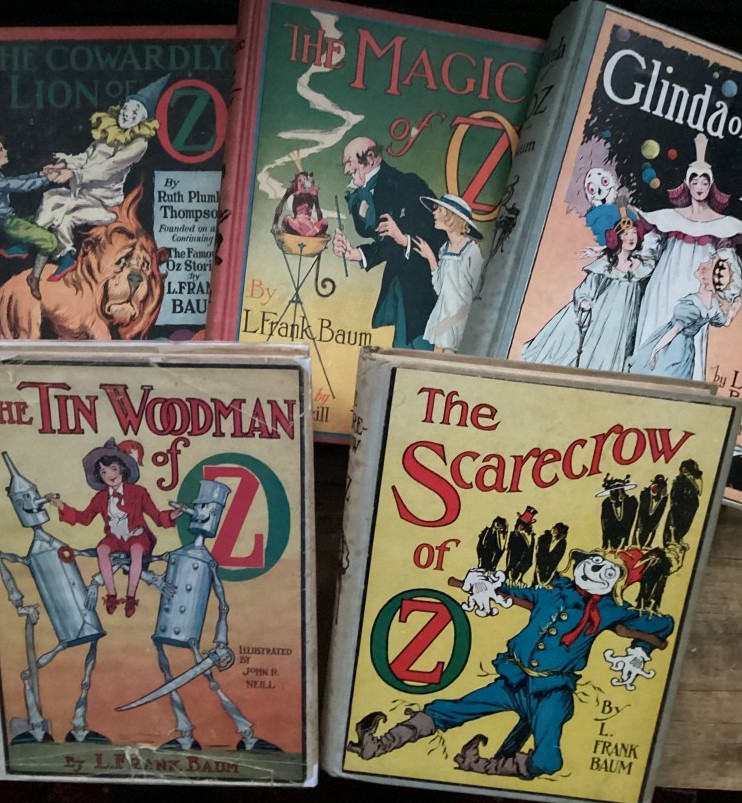Inspiring Young Readers
 posted on 04 Sep 2022
posted on 04 Sep 2022
The Wonderful World of Oz
Whether it’s because of the book or the film, L. Frank Baum’s The Wonderful Wizard of Oz, published in book form in 1900, has gone on to become both a children’s classic and a wider cultural phenomenon. The film made an icon of Judy Garland and her portrayal of Dorothy, the young girl whisked in her imagination to a magical realm. And who isn’t familiar with references to the yellow-brick road, Munchkins, the Cowardly Lion, the Tin Man, Scarecrow and wicked witches?
Fewer people will know much about the Baum, the man who created Oz at the beginning of the 20th century. Born in 1856 in New York, Baum (full name Lyman Frank Baum) was something of a jack-of-all-trades – failed theatre impresario, general store keeper in South Dakota, newspaper reporter in Chicago – until he finally hit gold as a children’s author.
What may also come as a surprise to many people is that The Wonderful Wizard of Oz was actually only the first book in what would become both a continuing series and, eventually, an industry that continued well after Baum’s death in 1919. In all, twenty Oz novels came out in Baum’s name – two of them were posthumous – but a further 30 or 40 Oz branded books appeared through to the late 1940s written by alternative authors, primarily Ruth Plumly Thompson.
The Wonderful Wizard of Oz was illustrated by William Wallace Denslow, a poster and commercial artist who met Baum in Chicago and worked with him on other children’s books outside the Oz project. However, the two men quarrelled over money and Baum, in a fit of pique, declared he would never work with Denslow again. And so the task of illustrating the subsequent Oz books passed to John R Neill and his interpretation of Baum’s characters became a consistent presence binding the publications together over the subsequent years – he even wrote three of the later ones himself.
Neill (1877 - 1943) was a successful commercial artist who moved on to producing comic strips for the Philadelphia North American newspaper that included a serialisation of one written by Baum. When he was commissioned to illustrate the second book in the Oz series, The Marvelous Land of Oz, he stuck quite closely to the style Denslow had established but soon developed the drawings into his own recognisable format. Neill’s illustrations gave form and shape to increasingly outrageous creations.
However, Neill’s most lasting contribution was almost certainly his reinvention of Dorothy. Denslow had drawn her as a rather dumpy, solid young girl with mousey pigtails but Neill scrapped that in favour of a much more contemporary young girl, fashionably dressed for an American 10 year old and with blond hair cut into a bob.
Neill’s illustrations are also credited for giving Ruth Plumy Thompson’s Oz books credibility with fans of the Baum-authored series. His artwork was immediately recognisable and arresting with highly coloured front cover illustrations that look great on the shelf. Inside the books the drawings that are generously scattered throughout are all black and white and frequently full page.
While The Wonderful Wizard of Oz was published by George Hill Company, subsequent books in the series were from Reilly and Britton which became Reilly and Lee in 1918. The books were very popular in the USA and sold in large numbers but were, of course, less well known in the UK. With so many titles available which sold in such large numbers, it’s not too hard to find copies in decent condition on the second-hand market. Prices inevitably vary with scarcity and you might pay as little as £10 for one title and maybe three figures for others.
If, however, your ambition is to get a first edition of the original Wonderful Wizard of Oz you will need to spend well into four figures….
Terry Potter
September 2022




